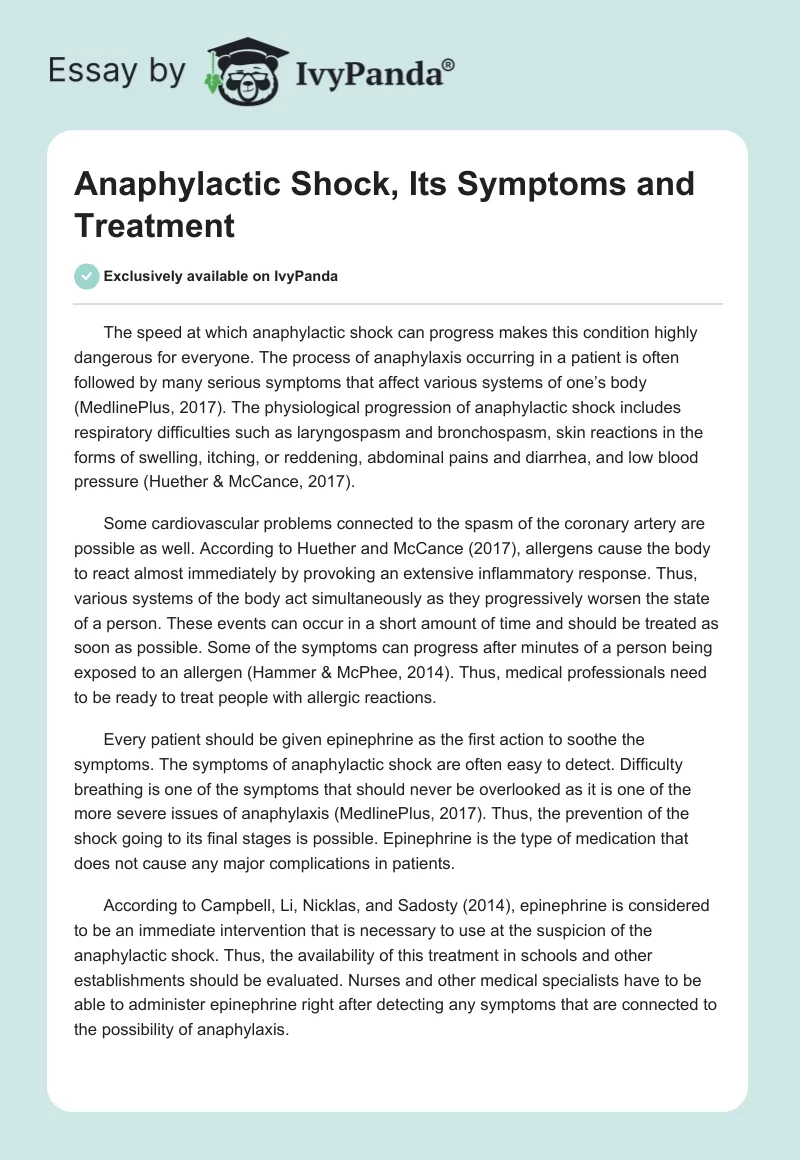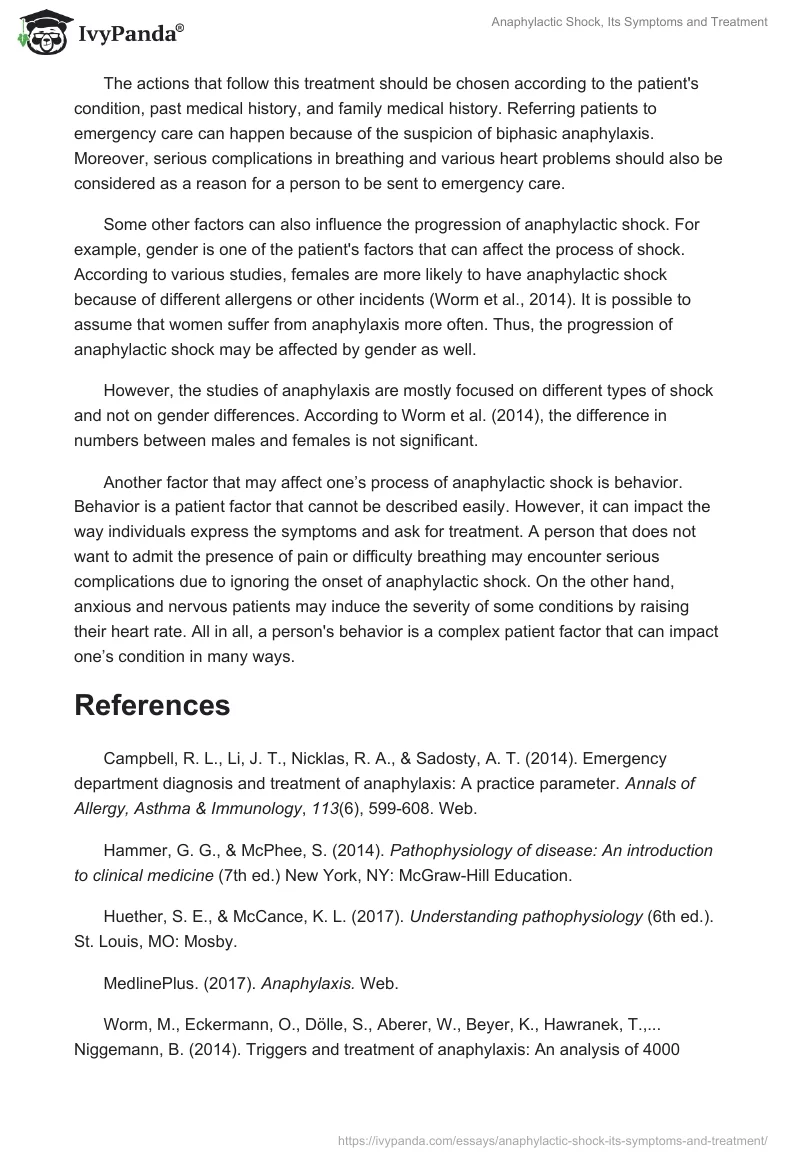The speed at which anaphylactic shock can progress makes this condition highly dangerous for everyone. The process of anaphylaxis occurring in a patient is often followed by many serious symptoms that affect various systems of one’s body (MedlinePlus, 2017). The physiological progression of anaphylactic shock includes respiratory difficulties such as laryngospasm and bronchospasm, skin reactions in the forms of swelling, itching, or reddening, abdominal pains and diarrhea, and low blood pressure (Huether & McCance, 2017).
Some cardiovascular problems connected to the spasm of the coronary artery are possible as well. According to Huether and McCance (2017), allergens cause the body to react almost immediately by provoking an extensive inflammatory response. Thus, various systems of the body act simultaneously as they progressively worsen the state of a person. These events can occur in a short amount of time and should be treated as soon as possible. Some of the symptoms can progress after minutes of a person being exposed to an allergen (Hammer & McPhee, 2014). Thus, medical professionals need to be ready to treat people with allergic reactions.
Every patient should be given epinephrine as the first action to soothe the symptoms. The symptoms of anaphylactic shock are often easy to detect. Difficulty breathing is one of the symptoms that should never be overlooked as it is one of the more severe issues of anaphylaxis (MedlinePlus, 2017). Thus, the prevention of the shock going to its final stages is possible. Epinephrine is the type of medication that does not cause any major complications in patients.
According to Campbell, Li, Nicklas, and Sadosty (2014), epinephrine is considered to be an immediate intervention that is necessary to use at the suspicion of the anaphylactic shock. Thus, the availability of this treatment in schools and other establishments should be evaluated. Nurses and other medical specialists have to be able to administer epinephrine right after detecting any symptoms that are connected to the possibility of anaphylaxis.
The actions that follow this treatment should be chosen according to the patient’s condition, past medical history, and family medical history. Referring patients to emergency care can happen because of the suspicion of biphasic anaphylaxis. Moreover, serious complications in breathing and various heart problems should also be considered as a reason for a person to be sent to emergency care.
Some other factors can also influence the progression of anaphylactic shock. For example, gender is one of the patient’s factors that can affect the process of shock. According to various studies, females are more likely to have anaphylactic shock because of different allergens or other incidents (Worm et al., 2014). It is possible to assume that women suffer from anaphylaxis more often. Thus, the progression of anaphylactic shock may be affected by gender as well.
However, the studies of anaphylaxis are mostly focused on different types of shock and not on gender differences. According to Worm et al. (2014), the difference in numbers between males and females is not significant.
Another factor that may affect one’s process of anaphylactic shock is behavior. Behavior is a patient factor that cannot be described easily. However, it can impact the way individuals express the symptoms and ask for treatment. A person that does not want to admit the presence of pain or difficulty breathing may encounter serious complications due to ignoring the onset of anaphylactic shock. On the other hand, anxious and nervous patients may induce the severity of some conditions by raising their heart rate. All in all, a person’s behavior is a complex patient factor that can impact one’s condition in many ways.
References
Campbell, R. L., Li, J. T., Nicklas, R. A., & Sadosty, A. T. (2014). Emergency department diagnosis and treatment of anaphylaxis: A practice parameter. Annals of Allergy, Asthma & Immunology, 113(6), 599-608. Web.
Hammer, G. G., & McPhee, S. (2014). Pathophysiology of disease: An introduction to clinical medicine (7th ed.) New York, NY: McGraw-Hill Education.
Huether, S. E., & McCance, K. L. (2017). Understanding pathophysiology (6th ed.). St. Louis, MO: Mosby.
MedlinePlus. (2017). Anaphylaxis. Web.
Worm, M., Eckermann, O., Dölle, S., Aberer, W., Beyer, K., Hawranek, T.,… Niggemann, B. (2014). Triggers and treatment of anaphylaxis: An analysis of 4000 cases from Germany, Austria and Switzerland. Deutsches Ärzteblatt International, 111(21), 367-375. Web.


